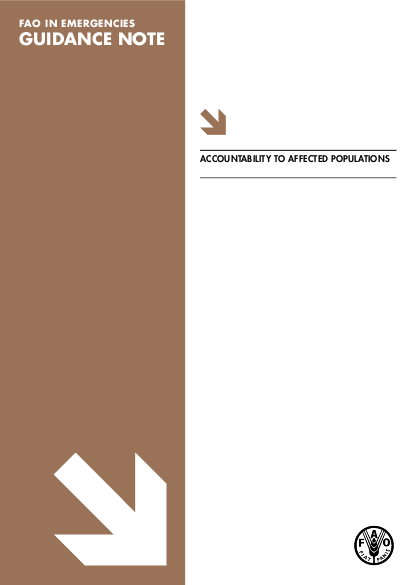
International organisations balance a complex system of accountabilities internally and externally to public and institutional donors, national and local authorities, partner agencies, host communities and the people they seek to assist, although prioritisation is traditionally weighted towards the first few groups. The 1998 Joint Evaluation on the International Response to the Genocide in Rwanda saw the first significant and clear exposure of lack of accountability to affected populations as a serious issue within an emergency response. Its call to the international community to consider and improve accountability led to the birth of a number of quality and accountability initiatives, including The Sphere Project and the Humanitarian Accountability Partnership (HAP). Since that first call, the message continues to be delivered, indicating the response has been slow to take significant hold and to demonstrate a widespread impact. For example, evaluations of responses to the Asian Tsunami and the Haiti earthquake again found AAP lacking, and as recently as 2011, the Humanitarian Emergency Response Review concluded that “local capacities are not utilised, the beneficiary is not involved enough and the quality of delivery is lower than it should be” and that the international humanitarian system needs to place accountability, learning and transparency at the centre of its response.
Efforts have been made over recent years to improve quality and accountability in the humanitarian sector, but the scale of the problem and the slow pace of change mean that poor quality programming, serious cases of corruption and instances of exploitation and abuse of affected populations by aid workers continue to surface at an unacceptable frequency. Amidst a growing acknowledgement that accountability to affected populations must be addressed by the system as a whole, FAO has joined with its humanitarian partners in the Inter-Agency Steering Committee (IASC) to adopt clear commitments on accountability to affected populations, and to prevent and respond to sexual exploitation and abuse by its own personnel or partners. FAO defines accountability to affected populations from a human rights perspective. For FAO, AAP means: “an active commitment by actors and organisations to use power responsibly by taking account of, giving account to, and being held to account by, the people they seek to assist.”
The current industry approach to AAP encourages humanitarian actors to be diligent in ensuring that the significant power they hold with regards to disaster-affected communities is exercised responsibly at every level of the system. It promotes an underlying tenet that people affected by emergencies are end users and stakeholders rather than “beneficiaries” of humanitarian assistance, that they have a fundamental right to shape efforts to assist them, and that humanitarian actors have a duty to respond to people’s expressions of their rights and needs.
The Emergency Operations and Rehabilitation Division (TCE) has been leading FAO’s AAP work since late 2011 to develop a corporate strategy and pragmatic tools to implement the commitments. This includes assessment of existing AAP strengths and gaps, pilot projects within country programmes, the development of sector-wide and FAO-specific AAP approaches and tools, and the design of a comprehensive work plan for to the protection of affected communities against sexual exploitation and abuse by FAO and partner staff. FAO is incorporating its commitments on AAP into relevant statements, policies, standard operating procedures and operational guidelines; it is also exploring ways to integrate AAP into partnerships and is working at an interagency and cluster level to support the integration of AAP at all levels of a humanitarian response.
FAO’s goal to improve policy and practice in AAP is underpinned by seven core commitments that provide the framework for focussed improvement. The purpose of this guidance note is to clarify what the commitments on AAP mean for the organisation and to help build understanding of what practically can be done to achieve those commitments. Below, each commitment is explained in more detail with a brief description, policy notes and examples from FAO’s practice in both emergency and development contexts. Links are provided to more detailed practical case examples from FAO and elsewhere and additional resources and tools.